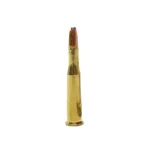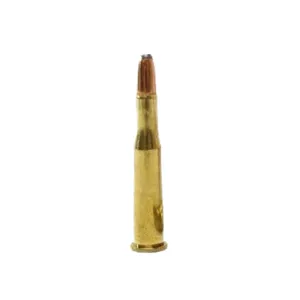
The .25-35 Winchester Center Fire (WCF) was introduced in 1895 in the Model 1894 Winchester lever-action, along with the .30 WCF, better known as the .30-30. Both cartridges also appeared in later variations of 1894, called the Model 55 and 64, along with other manufacturers’ lever-actions. The .30-30 became one of the most popular hunting rounds of all time, but the .25-35 Winchester apparently hung right in there until the 1920s, when higher velocity bolt-action cartridges took over the “small bore” market.
While significantly more powerful than the .25-20 Winchester, the .25-35 Winchester Center Fire can be used to hunt small deer at 200 yards and medium-sized deer at 100 yards, though some consider it better suited to small predators such as coyotes instead. It was a popular round used in the Winchester Model 1885 High Wall single-shot rifle. In standard loadings in a 20-inch barrel, the cartridge retains only about 800 to 900 fps at 100 yards, or about what its sister cartridge the .30-30 has at about 200 yards. Hornady's LEVERevolution load for the .25-35 Winchester, tested in a 24-inch barrel, lists about 900 fps at 200 yards; and the manufacturer claims the load is suited for deer and antelope.
Original factory ammo featured 117-grain soft-point and full metal jacket bullets at a listed 1,960 feet per second, but a 1925 “Super Speed” load with an 87-grain bullet supposedly got 2,700 fps, pretty close to the .250-3000 Savage. The 1954 Gun Digest was the last edition listing Winchester lever actions chambered in .25-35. Winchester ammunition has been continuously available since 1895, though since around World War II the only load has been the 117-grain round-nose soft point. Published muzzle velocity reached its peak at 2,300 fps in the early 1970s, when most factory ammunition was still tested in 26-inch barrels but is now 2,230.





